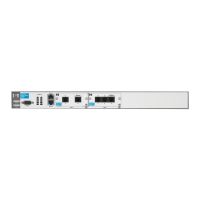B-38
Appendix B: Glossary
P
Packet A block of data encapsulated within one or more protocol headers. These
headers provide information about the packet’s application and about how
the packet is to be handled and routed as it travels through the network. A
packet that has been encapsulated within a Data Link Layer protocol is called
a frame or a cell (ATM).
Packet-filtering
Firewall
Firewall software that has been configured to screen incoming and outgoing
packets at the Network Layer (Layer 3). Packet-filtering firewalls pass or drop
packets based on the content of their TCP/IP headers. For example, a firewall
may be configured to drop all packets from a certain source or using a certain
application.
PAP Password Authentication Protocol. An authentication protocol that is part of
the PPP suite. Because PAP authenticates hosts by transmitting unencrypted
ASCII passwords over the network, PAP is considered insecure. See also
CHAP and EAP.
Password A secret string of characters that allows a user to access a computer or other
protected material. Passwords on the ProCurve Secure Router can be plain-
text or encrypted using MD5.
PAT Port Address Translation. A NAT technology that allows hosts with multiple
private IP addresses to share a single public IP address. PAT maps each host
in the LAN to the same global IP address, but to a unique UDP or TCP port
number. Return traffic is sent to that port, so it can be forwarded to the
correct host.
Payload The data that is encapsulated into a packet and transmitted over a network.
PBR Policy-based Routing. A technique that allows a router to make routing
decisions based on policies set by the network administrator instead of purely
on destination address. For more information on types of PBR, see RFC 1104
(at http://www.ietf.org/rfc/rfc1104.txt).
PBX Private Branch eXchange. A telephone exchange system that operates on-site
and is maintained and owned by the customer.
PCM Pulse Code Modulation. A technique for digitizing analog signals (such audio
or voice signals) by periodically sampling the analog signal and converting the
signal’s amplitude to a digital value. PCM samples the signal 8000 times a
second; each sample is represented by 8 bits for a total of 64 Kbps. PCM is
used in T-, E-, and J-carrier systems.

